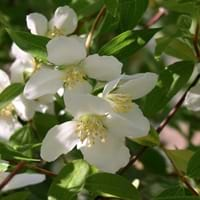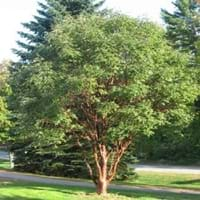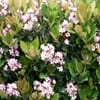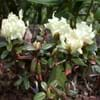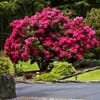Life Span
Perennial
Perennial
Types
Not Available
Not Available
Number of Varieties
Not Available
Habitat
Wide range of ecological site
Mixed deciduous forest
USDA Hardiness Zone
8-11
4-8
Sunset Zone
6, 7, 8, 9, 14, 15, 16, 17, 18, 19, 20, 21, 22, 23, 24
2a, 2b, 3a, 3b, 4, 5, 6, 7, 8, 9, 14, 15, 16, 17, 18, 19, 20, 21
Habit
Oval or Rounded
Upright/Erect
Flower Color
White
Yellow
Flower Color Modifier
Not Available
Bicolor
Fruit Color
Red, Orange
Green
Leaf Color in Spring
Green, Light Green
Dark Green
Leaf Color in Summer
Green
Dark Green
Leaf Color in Fall
Dark Green
Red, Green, Bronze, Orange Red
Leaf Color in Winter
Dark Green
Not Available
Leaf Shape
Ovate
Compound
Plant Season
Spring, Summer, Fall, Winter
Spring, Summer, Fall, Winter
Sunlight
Full Sun, Partial Sun
Full Sun
Type of Soil
Loam, Sand
Clay, Loam
The pH of Soil
Acidic, Neutral
Acidic, Neutral, Alkaline
Soil Drainage
Well drained
Well drained
Bloom Time
Early Spring, Spring, Late Spring, Late Summer, Early Fall, Late Winter
Spring
Tolerances
Drought
Not Available
Where to Plant?
Container, Ground, Pot
Ground
How to Plant?
Seedlings, Transplanting
Grafting, Seedlings
Plant Maintenance
Medium
Medium
Watering Requirements
Prefer drip-irrigation instead of Over-head watering
Medium
In Summer
Lots of watering
Lots of watering
In Spring
Moderate
Moderate
In Winter
Average Water
Average Water
Soil pH
Acidic, Neutral
Acidic, Neutral, Alkaline
Soil Type
Loam, Sand
Clay, Loam
Soil Drainage Capacity
Well drained
Well drained
Sun Exposure
Full Sun, Partial Sun
Full Sun
Pruning
Prune if you want to improve plant shape
Remove damaged leaves, Remove dead branches, Remove dead leaves
Fertilizers
14-14-14 Fertilizer, Fertilize in late fall, fertilize in spring, Requires high amount of nitrogen
All-Purpose Liquid Fertilizer
Pests and Diseases
Bacteria wilt, Red blotch
Red blotch
Plant Tolerance
Drought, Heat Tolerance
Drought
Flowers
Showy
Insignificant
Flower Petal Number
Single
Single
Fragrant Bark/Stem
Yes
No
Foliage Texture
Medium
Medium
Foliage Sheen
Glossy
Matte
Attracts
Hummingbirds
Not Available
Allergy
allergic conjunctivitis, Chest tightness, Diarrhea, Dizziness, Nausea, Vomiting
Not Available
Aesthetic Uses
Showy Purposes
Showy Purposes
Beauty Benefits
Brightens the skin complexion, Glowing Skin, Treatment of Dark Spots
Not Available
Environmental Uses
Air purification
Air purification
Medicinal Uses
Alzheimer’s Disease, Anxiety, Cancer, Diarrhea, Digestion problems, Liver problems, Menstrual Cramps, Respiratory Disorders, Weight loss
Not Available
Part of Plant Used
Whole plant
Wood
Other Uses
Used as Ornamental plant, Used for its medicinal properties
Showy Purposes
Used As Indoor Plant
Yes
No
Used As Outdoor Plant
Yes
Yes
Garden Design
Container, Feature Plant, Foundation, Mixed Border, Rock Garden, Tropical, Wall
Feature Plant, Foundation, Mixed Border
Botanical Name
CHOISYA ternata
ACER griseum
Common Name
Mexican Orange, Mock Orange
Paperbark Maple
In Hindi
Philadelphus
paperbark maple
In German
Pfeifensträucher
paperbark Ahorn
In French
Philadelphus
érable paperbark
In Spanish
Philadelphus
arce paperbark
In Greek
Philadelphus
Paperbark σφενδάμου
In Portuguese
Philadelphus
de bordo paperbark
In Polish
Jaśminowiec
klon paperbark
In Latin
Philadelphus
paperbark acernis
Phylum
Magnoliophyta
Magnoliophyta
Class
Magnoliopsida
Magnoliopsida
Order
Cornales
Sapindales
Family
Rutaceae
Aceraceae
Clade
Angiosperms, Asterids, Eudicots
Angiosperms, Eudicots, Rosids
Tribe
Philadelpheae
Not Available
Subfamily
Hydrangeoideae
Not Available
Number of Species
Not Available
Importance of Mock Orange and Paperbark Maple
Want to have the most appropriate plant for your garden? You might want to know the importance of Mock Orange and Paperbark Maple. Basically, these two plants vary in many aspects. Compare Mock Orange and Paperbark Maple as they differ in many characteristics such as their life, care, benefits, facts, etc. Every gardener must at least have the slightest clue about the plants he wants to plant in his garden. Compare their benefits, which differ in many ways like facts and uses. The medicinal use of Mock Orange is Alzheimer’s Disease, Anxiety, Cancer, Diarrhea, Digestion problems, Liver problems, Menstrual Cramps, Respiratory Disorders and Weight loss whereas of Paperbark Maple is Not Available. Mock Orange has beauty benefits as follows: Brightens the skin complexion, Glowing Skin and Treatment of Dark Spots while Paperbark Maple has beauty benefits as follows: Brightens the skin complexion, Glowing Skin and Treatment of Dark Spots.
Compare Facts of Mock Orange vs Paperbark Maple
How to choose the best garden plant for your garden depending upon its facts? Here garden plant comparison will help you to solve this query. Compare the facts of Mock Orange vs Paperbark Maple and know which one to choose. As garden plants have benefits and other uses, allergy is also a major drawback of plants for some people. Allergic reactions of Mock Orange are allergic conjunctivitis, Chest tightness, Diarrhea, Dizziness, Nausea and Vomiting whereas of Paperbark Maple have Not Available respectively. Having a fruit bearing plant in your garden can be a plus point of your garden. Mock Orange has no showy fruits and Paperbark Maple has no showy fruits. Also Mock Orange is not flowering and Paperbark Maple is not flowering . You can compare Mock Orange and Paperbark Maple facts and facts of other plants too.
